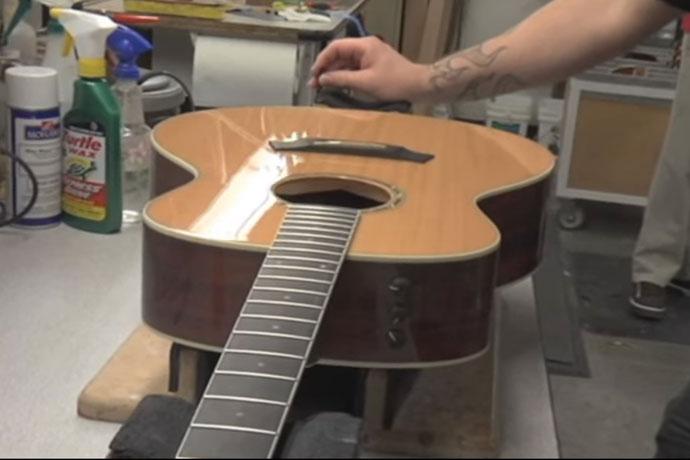Tuning New Strings Up To Pitch
Here's a tip from the pros…
There's nothing quite like the shimmer of new strings on a freshly polished guitar. The trouble is, unless you learn the correct method for getting your instrument in tune – and keeping it that way – your triumphant opening chord at the show tonight might just clear out the venue. Here's how.
- Even if you've installed them correctly, box-fresh strings have a tendency to go flat after you've played a few licks. To prevent endless tweaking, your first move is to grasp each string where it passes over the pickups and gently pull it upwards away from the body, so eliminating slack at the nut, bridge and tuners. Just be wary of advice to 'stretch' your strings: pulling too hard can cause terminal damage to the windings. Next, gently bend your strings behind the nut and bridge. Once you can play a heavy bend, and the string returns to the correct pitch afterwards, you're ready to tune them more accurately.
- Many guitarists settle for 'relative tuning' (ie. using the low string as a guide for the other strings, whether or not it's actually tuned to pitch 'E'). However, to play with other musicians or in a band you will need to tune accurately, so it's better to use a digital keyboard, pitch pipe, tuning fork or – best of all – battery-powered electronic tuner as your reference point.
- Always tune the low E string first, remembering to start off flat and tune up to the desired pitch - if you overshoot, slacken off below the desired pitch and start again. Do this for each string in turn. Once you think you've got it just right, check by playing octave intervals across the fretboard, then open chords in the low register, and listening out for discrepancies.
- If your guitar has a tremolo – especially a Floyd Rose-style unit – try a slightly different tuning method that prevents the infuriating scenario of sharpening one string, only to find that it's made the others go flat. First, tune the low E string, then move to the A, then return to check the low E, before moving to the D, then back to the A (and so forth). Guitarists using a floating tremolo will also need to ensure the mini-tuner's have plenty of roll in both directions for subsequent adjustment, and that the nut locks are fully tightened.
- Finally, when you're playing live, it's wise to stand your instrument onstage for a period before showtime, and check it one last time before you start playing, as the heat generated by the stage lights can affect the tuning. If, after all that, you're still struggling to hit your tuning on the nose, there could be a problem with the setting of your intonation.


